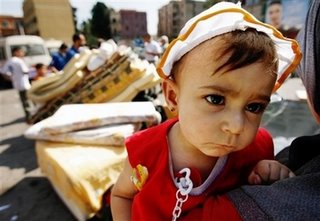Help the Children Impacted by the Middle East Conflict



From Save the Children:
My name is Sonia Khush, and I am an emergency team leader for Save the Children, currently working in the Middle East.
Save the Children-USA, together with other members of the International Save the Children Alliance, is working on all sides of the conflict to assist children and families impacted, regardless of religious or political affiliation. We are working in Lebanon, Gaza and northern Israel, focusing on helping children cope.
An estimated 30 to 40 percent of the civilians killed since the onset are children. Families displaced from their homes have been living in schools or other public buildings, often unable to access food, clean water or health services. Crammed into small areas, anxiety has been high, parents stressed and children scared. Children have trouble sleeping and some are exhibiting aggressive behavior as a result of the tension. Save the Children has set up “safe spaces” to give children play areas in which to spend their time and provided activity kits for children and families to use while inside their homes to provide some level of normalcy. But more needs to be done.
Please support Save the Children's continued work to help the most vulnerable victims of this conflict — the children. They have nothing to do with the politics of this region and their survival, along with their emotional and mental well-being is critical to the recovery effort.



0 Comments:
Post a Comment
<< Home